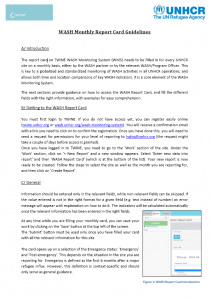 |
UNHCR WASH Monthly Report Card Guidelines (UNHCR, 2016)This document provides guidance on how to access the WASH Report Card within TWINE, and fill in the different fields with the right information, with examples for easy comprehension.
|
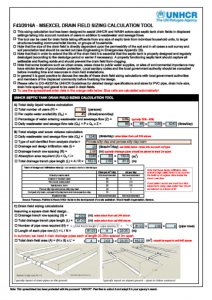 |
F-402/2016a Drain Field Sizing Spreadsheet (UNHCR, 2016)This sizing calculation tool has been designed to assist UNHCR and WASH actors correctly size drain fields for septic tanks in displaced settings taking into account numbers of users, soil type, and wastewater and sewage flows.
|
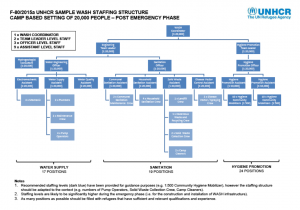 |
F-800/2015a Sample WASH Staffing Structure for Post Emergency Camp Setting (UNHCR, 2015)A sample organigram for running a typical refugee WASH programme for 20,000 people in a post emergency camp based setting. The organigram gives an indication of how the WASH Team should be structured in addition to the tentative number of Coordinators, Team Leaders, Officer, and Assistant level staff that should be recruited.
|
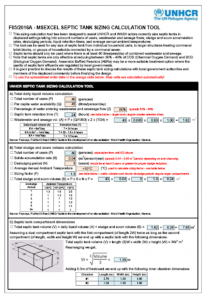 |
F-401/2016a Septic Tank Sizing Spreadsheet (UNHCR, 2016)This sizing calculation tool has been designed to assist UNHCR and WASH actors correctly size septic tanks in displaced settings taking into account numbers of users, wastewater and sewage flows, sludge and scum accumulation rates, desludging periods, liquid retention times, and average annual ambient temperatures.
|
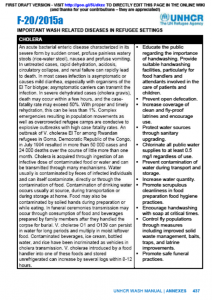 |
F-200/2015a Summary of Important WASH Diseases in Refugee Settings (UNHCR, 2015)This document provides a quick summary of the most important WASH related diseases for refugee settings and includes a list of recommended control strategies.
|
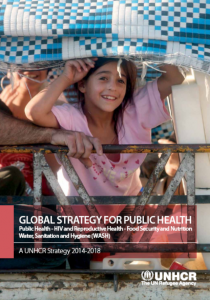 |
UNHCR Global Strategy for Public Health 2014 – 2018 (UNHCR, 2014)This document describes UNHCR’s global strategy for public health through a set of guiding principles and strategic approaches including protection; age, gender and diversity; equity; access; sustainability; community empowerment; appropriateness and reliability; partnerships and coordination; capacity building; communication and advocacy; integrated approaches; measurement and monitoring; and innovation. The document describes strategic objectives and enabling actions per sub-sector (Public Health, HIV and Reproductive Health, Food Security and Nutrition, and WASH).
|
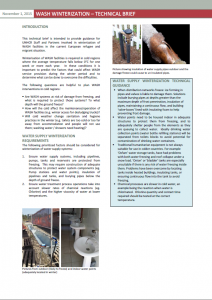 |
WASH Winterization Technical Brief (UNHCR, 2015)This technical brief is intended to provide guidance for UNHCR staff and Partners involved in winterization of WASH facilities in the current European refugee and migrant situation.
|
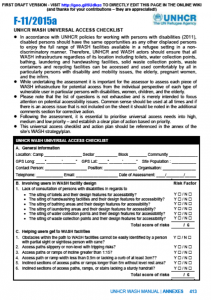 |
F-101/2015a UNHCR WASH Universal Access Checklist (UNHCR, 2015)This document has been designed to help UNHCR and WASH actors assess WASH infrastructure for potential access from the individual perspective of each type of vulnerable user in particular persons with disabilities, women, children, and the elderly.
|
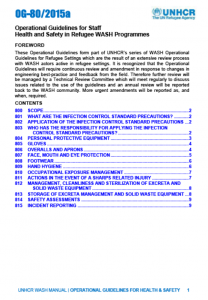 |
OG-802 Operational Guidelines for Staff Health and Safety in Refugee WASH Programmes (UNHCR, 2015)This document provides health and safety guidelines for refugee WASH programmes for staff are involved in either: cleaning of toilets; maintenance of toilets; desludging of toilets; the collection and movement of excreta; the collection or movement of solid wastes; the handling of vector control or water treatment chemicals; any staff who may potentially come into contact with excreta, sewage, wastewater, solid waste, medical waste or any other sources of (potential) infection.
|
 English
English